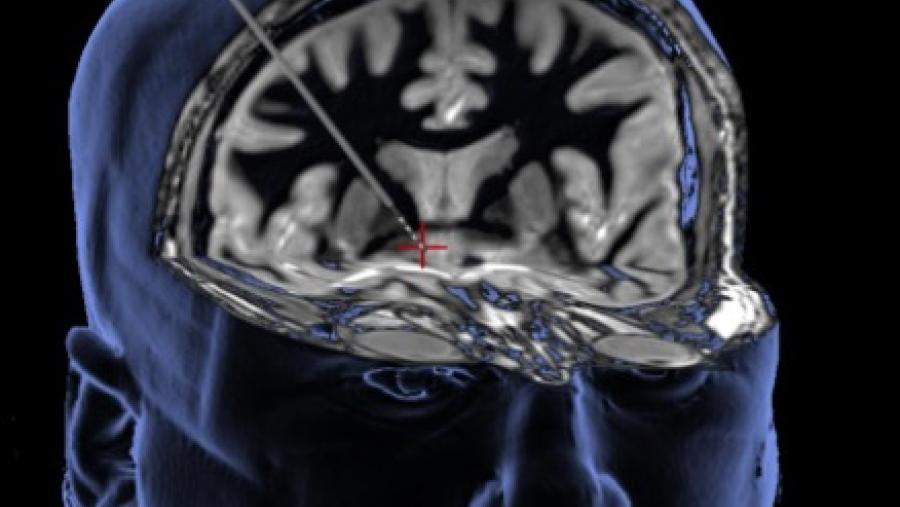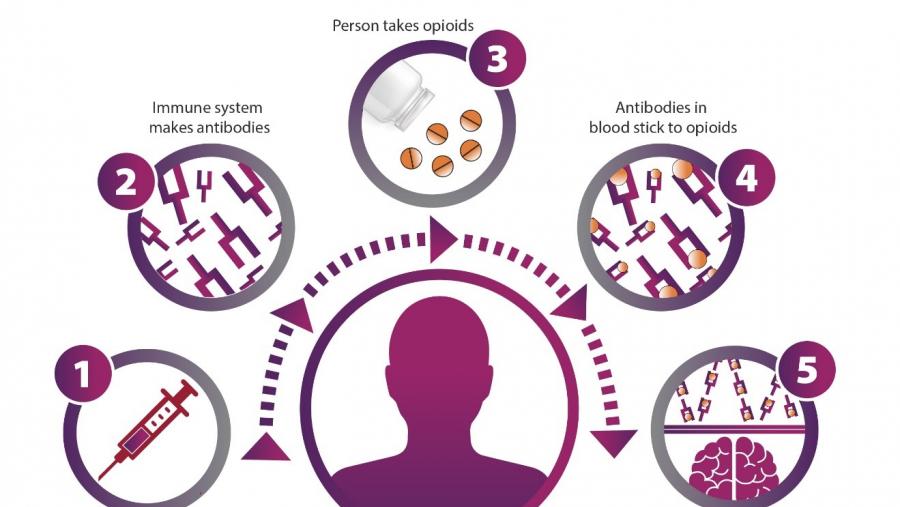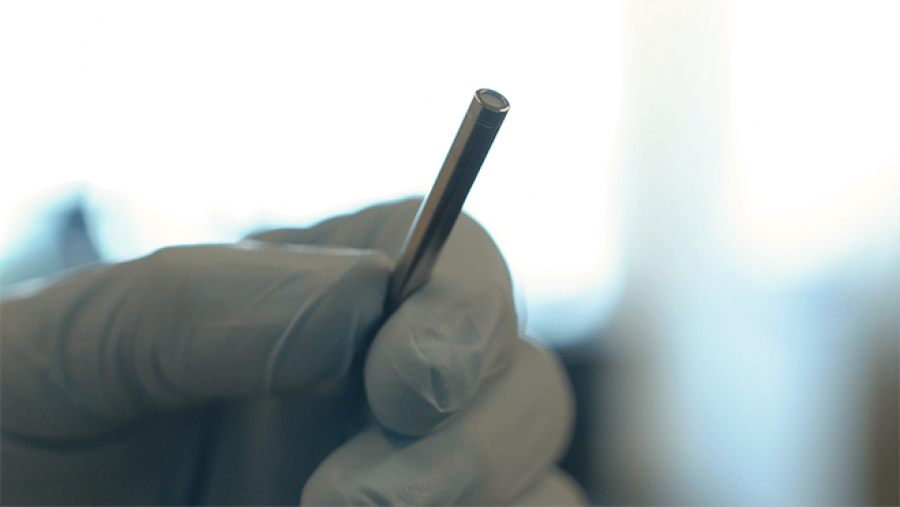Focusing Medication Development to Prevent and Treat Opioid Use Disorder and Overdose
Overview
The Research Need
Currently, only a few medications are approved by the U.S. Food and Drug Administration for the treatment of opioid use disorder and withdrawal. However, these treatments are under-used, and they may not be as effective against synthetic opioids and drug combinations (including stimulants) that are driving record-high numbers of overdoses. More effective and flexible treatment options are also needed to meet the needs of individuals with co-occurring mental health disorders that increase the risk for addiction and overdose.
About the Program
This program identifies and develops innovative technologies and therapeutic approaches (small molecules, biologics, and others) to prevent and treat opioid use disorder and stimulant use disorder, as well as to reverse opioid-induced respiratory depression and overdose. This research mainly supports the development of new medications that are more effective and accessible, and that have fewer side effects than current options. Research includes all stages of development, from identification of novel compounds to clinical testing in humans.
The program includes a focus on medication development for use by vulnerable populations, such as pregnant women and newborns experiencing opioid withdrawal. This research also develops new medications, combinations of medications, and non-medication treatment approaches (alone or in combination) for use by people with co-occurring misuse of opioids and/or stimulants and mental health disorders.
Open Funding Opportunities
There are no Open Funding Opportunities at this time.Research Examples
Research examples supported by this program include:
- Developing technology to control the release of opioid medications in the body to treat opioid use disorder or prevent relapse
- Developing medications and medical devices to manage opioid withdrawal, reduce cravings, and lower the risk of a relapse in people receiving treatment for opioid use disorder
- Developing opioid vaccines to reduce the risk of an opioid overdose and to treat opioid use disorder
- Optimizing oral, injectable, and implantable, long-acting medications to treat opioid use disorder
- Developing medical devices to detect an opioid overdose and automatically administer life-saving medications
- Developing medications that can prevent or reverse opioid-induced respiratory depression
- Developing medications for the treatment of stimulant use disorder, withdrawal, and overdose as well as co-occurring opioid and stimulant use disorders; or reversing concurrent opioid and stimulant overdose
- Developing new (or repurposing existing) medications and devices to treat co-occurring opioid use disorder and mental health disorders
- Developing digital therapeutics to deliver treatments that are safe and effective in people with substance use disorders
- Adynxx, Inc. – California
- Artys Biotech, LLC – Pennsylvania
- Astellas Pharma Global Development, Inc. – Illinois
- Astraea Therapeutics, LLC – California
- AstraZeneca Pharmaceuticals – Delaware
- Baylor College of Medicine – Texas
- BiocorRx, Inc. – California
- Biomedical Research Institute of New Mexico – New Mexico
- Boston University Medical Campus – Massachusetts
- Butler Hospital – Rhode Island
- Cerevel Therapeutics, LLC – Massachusetts
- Cessation Therapeutics, LLC – California
- Delpor, Inc. – California
- Duke University – North Carolina
- Eicosis, LLC – California
- Emergent Product Development Gaithersburg, Inc. – Maryland
- Emory University – Georgia
- Ensysce Biosciences, Inc. – California
- Epiodyne, Inc. – California
- Hager Biosciences, Inc. – Pennsylvania
- Henry M. Jackson Foundation for the Advancement of Military Medicine – Maryland
- Icahn School of Medicine at Mount Sinai – New York
- Indiana University–Purdue University at Indianapolis – Indiana
- Indivior – Virginia
- Insys Development Company – Arizona
- Intervexion Therapeutics, LLC – Arkansas
- Intra-Cellular Therapies, Inc. – New York
- Johns Hopkins University – Maryland
- Kinoxis Therapeutics, Pty LTD – Victoria, Australia
- Libero Pharma Limited – Edinburgh, United Kingdom
- Lohocla Research Corporation – Colorado
- Lyndra Therapeutics, Inc. – Massachusetts
- Massachusetts General Hospital – Massachusetts
- McLean Hospital – Massachusetts
- Mebias Discovery, LLC – Pennsylvania
- Medical University of South Carolina – South Carolina
- New York State Psychiatric Institute – New York
- Nirsum Laboratories, Inc. – New York
- Northeastern University – Massachusetts
- Omeros Corporation – Washington
- Otsuka Pharmaceutical Development & Commercialization, Inc. – New Jersey
- Pennsylvania State University Hershey Medical Center – Pennsylvania
- Phoenix Pharmalabs, Inc. – Utah
- Pocket Naloxone Corporation – Maryland
- Purdue University – Indiana
- Salk Institute for Biological Sciences – California
- Sanford Burnham Prebys Medical Discovery Institute – California
- Sloan-Kettering Institute – New York
- The Drug Delivery Company, LLC – Maryland
- The University of Texas Medical Branch at Galveston – Texas
- Titan Pharmaceuticals, Inc. – California
- Tris Pharma, Inc. – New Jersey
- University of Arizona – Arizona
- University of British Columbia – British Columbia, Canada
- University of California, Davis – California
- University of California, Los Angeles – California
- University of Colorado, Denver – Colorado
- University of Florida – Florida
- University of Illinois at Chicago – Illinois
- University of Kentucky Research Foundation – Kentucky
- University of Minnesota – Minnesota
- University of New Mexico Health Sciences Center – New Mexico
- University of Pennsylvania – Pennsylvania
- University of Texas Health Science Center at San Antonio – Texas
- University of Texas Medical Branch at Galveston – Texas
- University of Washington – Washington
- USWM, LLC – Kentucky
- Virginia Commonwealth University – Virginia
- Virginia Polytechnic Institute and State University – Virginia
- Washington State University – Washington
- Wayne State University – Michigan
- West Virginia University – West Virginia
- Yale University – Connecticut
Contact
Participating NIH Institutes, Centers, and Offices
- National Center for Advancing Translational Sciences (NCATS)
- National Center for Complementary and Integrative Health (NCCIH)
- National Heart, Lung, and Blood Institute (NHLBI)
- National Institute of Dental and Craniofacial Research (NIDCR)
- National Institute of Mental Health (NIMH)
- National Institute on Aging (NIA)
- National Institute on Drug Abuse (NIDA)
 U.S. Department of Health & Human Services
U.S. Department of Health & Human Services






